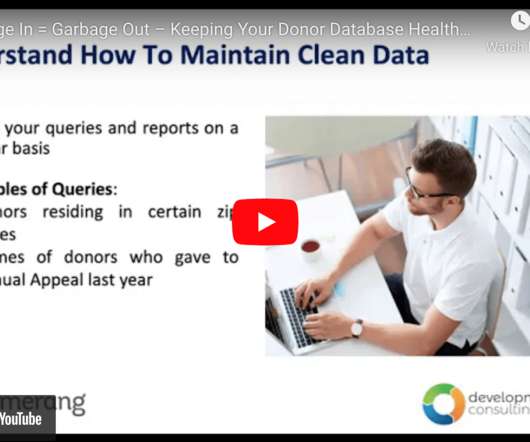Trainer’s Tip: Your Room Set Up Can Make or Break the Learning Experience
Beth's Blog: How Nonprofits Can Use Social Media
JANUARY 19, 2017
As a long-time trainer, professor, and teacher, I feel strongly that interactive learning activities – going beyond the death by Powerpoint Lecture – is the key to retention and application for participants. Your room set up can support your instructional activities that engage participants or get in the way.
























Let's personalize your content